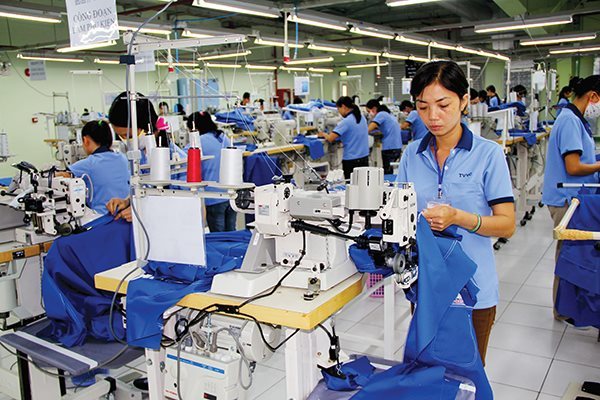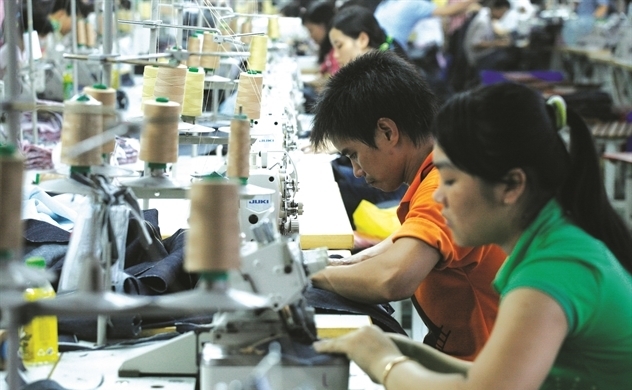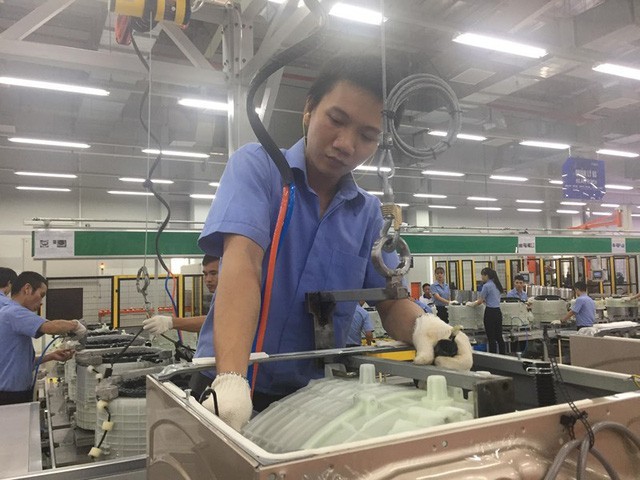- © Copyright of Vietnamnet Global.
- Tel: 024 3772 7988 Fax: (024) 37722734
- Email: evnn@vietnamnet.vn
vinatas
Update news vinatas
Garment companies struggle to escape Cut-Make-Trim production
 It is becoming more difficult for textile and garment companies to recruit workers as
It is becoming more difficult for textile and garment companies to recruit workers as
labor costs keep increasing and workers quit to move to higher paying jobs. The only solution is changing the production method.
US importers reconsider orders of Vietnam’s garments
 Instead of getting benefits from the US-China trade war as predicted, Vietnam’s garment companies are meeting difficulties as US importers are reconsidering business with Vietnam’s exporters.
Instead of getting benefits from the US-China trade war as predicted, Vietnam’s garment companies are meeting difficulties as US importers are reconsidering business with Vietnam’s exporters.
If US imposes sanctions, some VN industries may be eliminated
 “We have discovered some Vietnamese businesses which joined hands with Chinese to help Chinese evade the US levy, " said Vu Duc Giang, chair of the Vietnam Textile and Apparel Association (Vinatas).
“We have discovered some Vietnamese businesses which joined hands with Chinese to help Chinese evade the US levy, " said Vu Duc Giang, chair of the Vietnam Textile and Apparel Association (Vinatas).
Vietnam ready to receive South Korean investment in textile & garment sector
VietNamNet Bridge - A new investment wave is expected to hit Vietnam’s textile & garment industry in the time to come, triggered by the Vietnam-South Korea FTA.
Vietnam emerges as denim fabric manufacturing center
VietNamnet Bridge - Weaving is believed to be the weakest link in Vietnam’s textile and garment value chain, but denim fabric is a strong point of local producers.
Textile production cannot meet industry demand
If Vietnamese textile and garment companies cannot organize fabric production, the industry will have to import 15 out of 18 billion square meters of fabric it needs by 2025. If so, Vietnam will forever do outsourcing for foreign companies.
4.0 industrial revolution yet to make impact on Vietnam's textile & garment industry
VietNamNet Bridge - Garment companies have yet to feel the pressure from the 4.0 industrial revolution, which is expected to replace many workers with robots as automation becomes more widespread.
Textile and garment industry undergoes restructuring
VietNamNet Bridge - Restructuring the textile and garment industry involves drawing up a new development strategy, using new technologies, and closing fiber and textile factories that use outdated technologies.
Vietnam’s fashion brands lose ground in home market
VietNamNet Bridge - While Vietnamese fashion brands struggle to exist in the $3 billion home market, foreign brands have been warmly welcomed.
Ministry to suspend Vinatas from operation
VietNamNet Bridge – Deputy Minister of Home Affairs Tran Anh Tuan yesterday said that his ministry and related agencies will consider suspending Vietnam Standards and Consumers Association (Vinastas) from operation concerning
Robots threatening livelihoods of millions of workers in Vietnam
VietNamNet Bridge - Experts have warned that millions of Vietnamese workers, especially in the electronic parts, footwear and garment industries, will become redundant because of the use of robots at factories.
Foreign investment in textile & garment sector falls
VietNamNet Bridge - Unlike two years ago, when Vietnam witnessed a wave of foreign direct investment (FDI) in textile & garment projects, the capital flow into the sector has slowed down.
Vietnam’s garment industry can’t keep ‘waiting for the TPP’
2016 is expected to be the most difficult year in the last decade for Vietnam’s textile and garment industry. While waiting for preferential tariffs to be offered by the TPP, Vietnamese companies are seeing orders ‘flee’ to other countries.
Nestle admit to using soybeans in coffee products
VietNamNet Bridge - Confirming that its coffee products in the market contain soybeans, a representative of Nestle Vietnam said the proportion of ingredients was a "business secret’.
Mid-, high-end products could save Vietnamese garment companies
VietNamNet Bridge - Vietnamese garment companies are increasingly concerned as foreign partners are placing orders with producers from Laos and Myanmar. They have been told to focus on making mid- and high-end products.
Will garment companies reap huge benefits from TPP when tariffs fall?
Vietnamese textile & garment companies won’t directly benefit from the $1 billion worth of tax from sales to the US once the Trans Pacific Partnership Agreement (TPP) takes effect, officials have affirmed.
Providing airport services is lucrative business
VietNamNet Bridge - The increasingly high number of airline passengers has allowed airport service providers to make stable profits.
What is the scenario for the VN Index in 2016?
VietNamNet Bridge - Despite a lot of unknowns and current bad performance, analysts still believe a 7-12 percent increase of the VN Index can be reached in 2016.
Misfortunes still sting textile & garment sector in 2016
VietNamNet Bridge - Many small textile and garment companies plan to merge with others, while big companies will have to try every possible means, including lowering selling prices, to retain clients.
Garment companies allowed to make foreign army uniforms
VietNamNet Bridge - Deputy Prime Minister Hoang Trung Hai has given permission to garment companies to make uniforms for foreign armed forces.



















